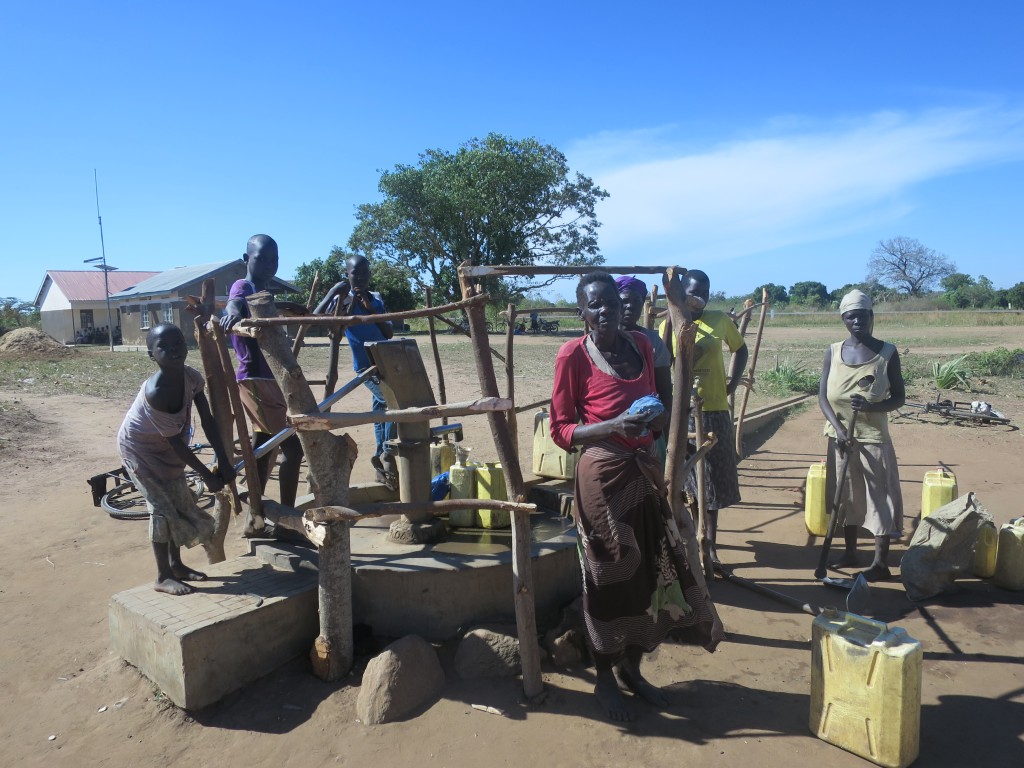We are waiting for the final approvals for the proposal we have been working on to provide food assistance. Once the project is finalized we will share some of the details with you in our next blog. In the meantime, we would like to tell you about some of the things we have discovered while doing our research for this project. This is information gleaned from speaking to the local people, not Wikipedia! It’s also a great opportunity to share some of our photos!
Water supply
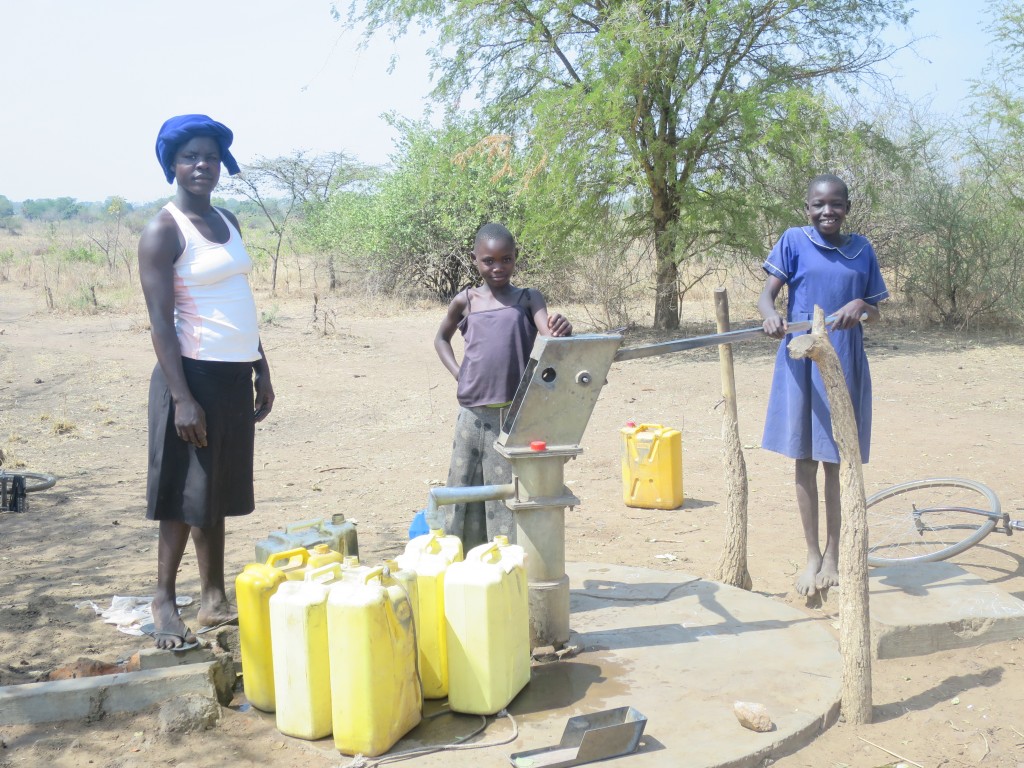
Collecting water for the family
Although some of the shallower wells in this area have run dry and the swamps are decreasing in size, unlike some of the other assignments we have been on, thankfully, there is a good supply of water in the boreholes. A typical family needs numerous jerry cans of water each day for drinking, cooking, and cleaning themselves. Doing laundry is a luxury. Women and children make several trips per day to fill the cans, often waiting in lineups. Remember, they have limited energy due to lack of caloric intake. We have noted that many attach their cans to a bike and push the load back to their homes. Animals are often watered at the same boreholes but we are told that contamination from their manure is not an issue since the boreholes are very deep.
Hunting and Fishing
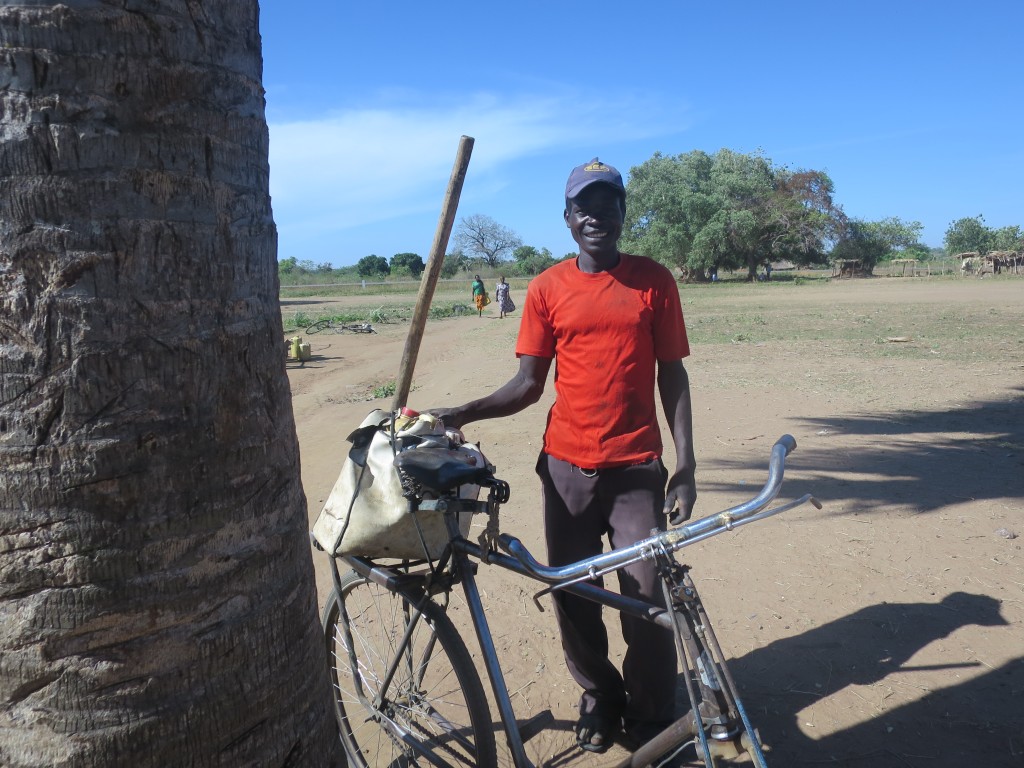
Fishing anyone?
In some areas where there are swamps, an alternate supply of food is available. Mudfish can be caught by digging them up in the swamp. Imagine going fishing with a hoe or shovel instead of a fishing pole. In other areas men go hunting for rats or “large birds”. We are not sure what these birds are but personally, we think we would prefer to eat them over the rats.
Kitchen gardens
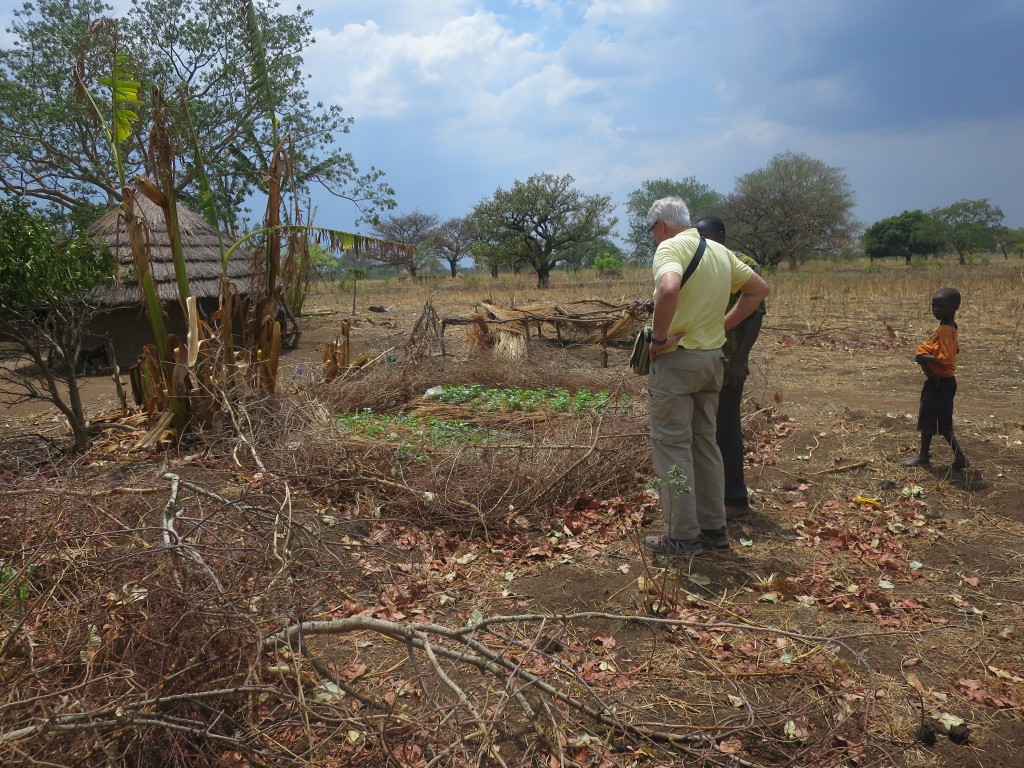
In a number of locations area farmers have been taught about the value of kitchen gardens. These consist of vegetables planted near their homes. The garden we saw was growing some cowpeas which were only two weeks old and pretty impressive. An important part of the planning is to enclose them with some sort of fence (dried thorn bushes in this case) to keep the livestock from foraging these fresh shoots. They have an interesting way of lining up straw stems over the initial growth to keep in the moisture. However, water is needed for the veggies to grow and the home we visited was fortunate to have a borehole nearby. For most, kitchen gardening is not possible as the water supply is far away and there is no water to spare after the daily water needs are met. The owner of this garden was a community leader who was taught this method of growing vegetables and is now a good example for the others nearby. New practices take time for people to “buy in” but seeing is believing!
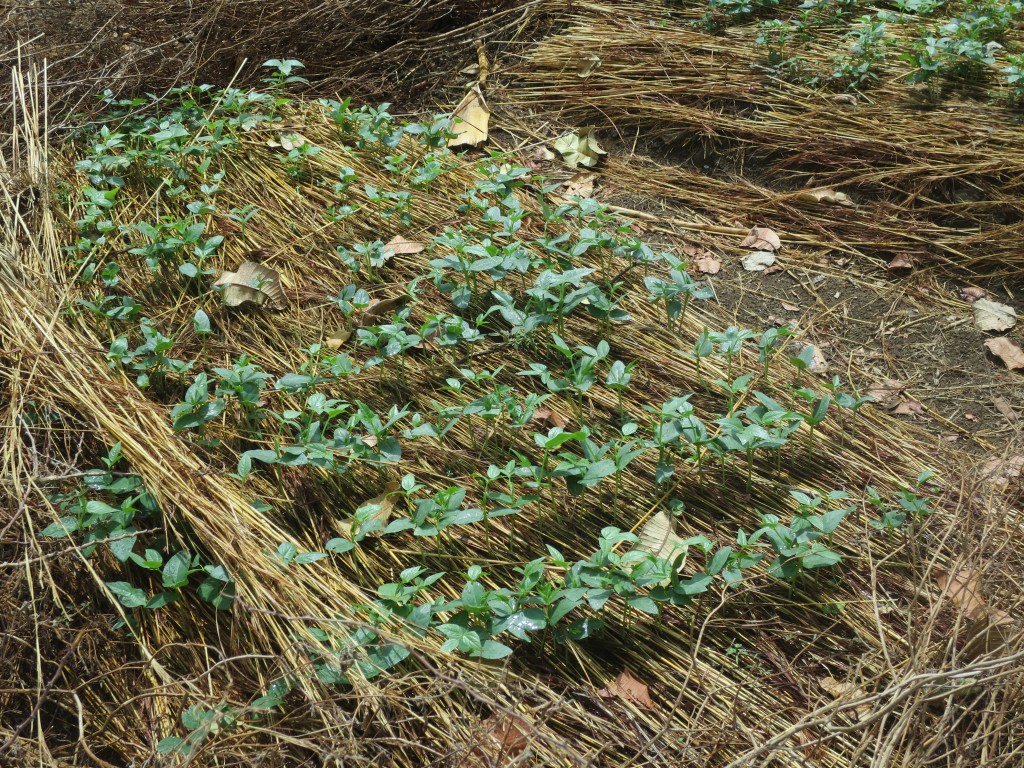
Cowpeas
We have chosen to include cowpea seeds in our proposal. Here are some interesting facts on why. First let us explain that we were advised that these seeds should not be given out until after the first distribution of food as there is a very strong chance that these very hungry recipients will eat them instead of planting them. As soon as the first rains come, they will hand spread (“broadcast”) the seeds over the prepared field. Cowpea seeds germinate and grow quickly and the fresh leaves can be eaten while waiting for the beans to mature. In three months, the beans will be ready to harvest coinciding with the last of the planned food distributions. The farmers will be encouraged to save some of the harvested cowpeas for planting during the next growing season (September).
Cassava
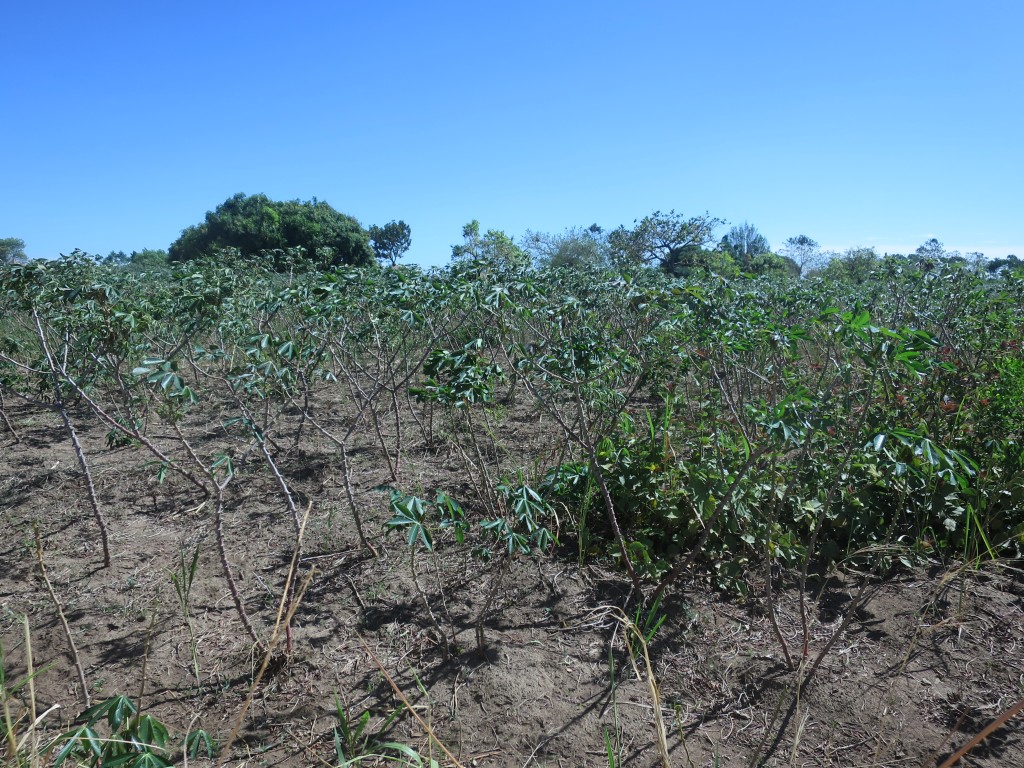
A cassava field under stress
For the people in this part of Uganda, it is vitally important to have a cassava garden. Cassava is the main crop in this area and without it, people are at risk of hunger. It grows well even in poor soil and is a strongly drought-resistant crop. Cassava has seen them through drought seasons in the past. A household with no cassava growing is considered to be “lazy, poor and hunger prone”.
For many farmers it is normal to plant two acres of cassava stems for a cassava garden. These take about 12 months to mature and the tubers are then harvested as needed. During this drought however, in desperation, much of the cassava is being harvested prematurely even though it tastes very bitter in this early state. Some of the plants are used up entirely leaving the stems to dry out and thus can not be used to make new cuttings for future planting.
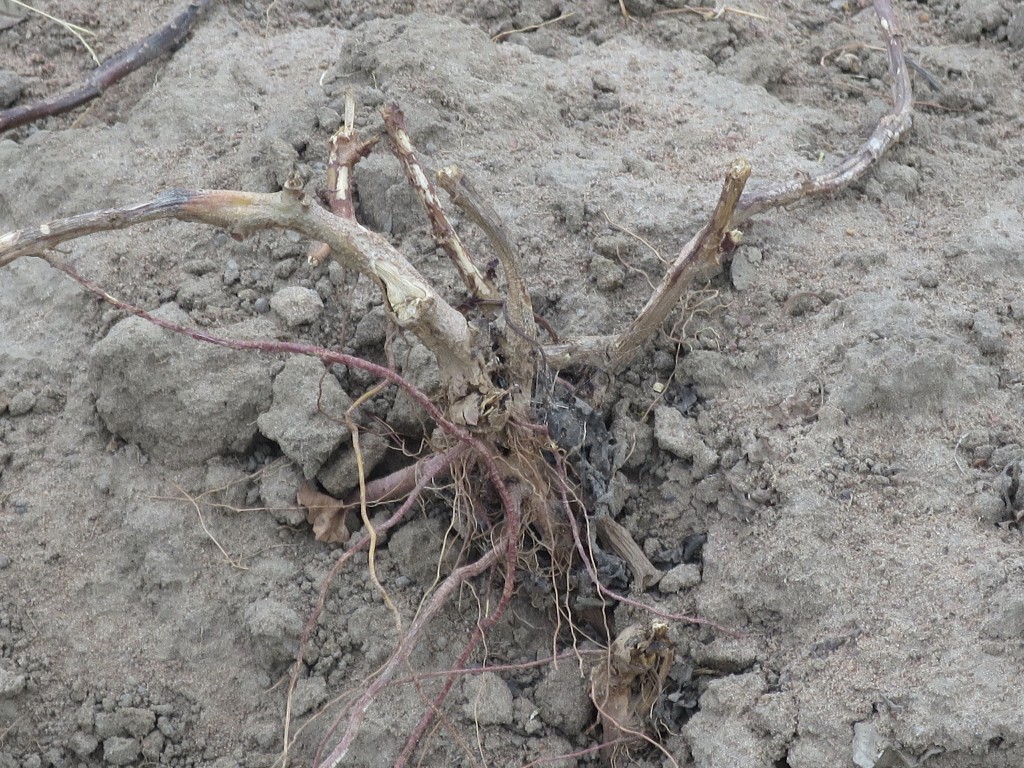
Premature Harvesting of Cassava
The tubers are peeled and dried and then cut into chunks. These dried cassava chunks and sorghum are milled into a flour which is used to make “atap” the food most favoured by the local Ugandans. They mix these products to make a sort of paste (our description) which they pick up by hand, trapping a bit of “sauce” in each bite. This sauce can be any kind of available vegetable or meat.
The tubers can also be boiled and eaten, much as we would with sweet potatoes. Despite the fact that it often plays an important role in peoples’ diets, cassava has very limited nutritional value. It has the advantage of being filling in any form, a blessing when little else is available.
Echomai Leaves
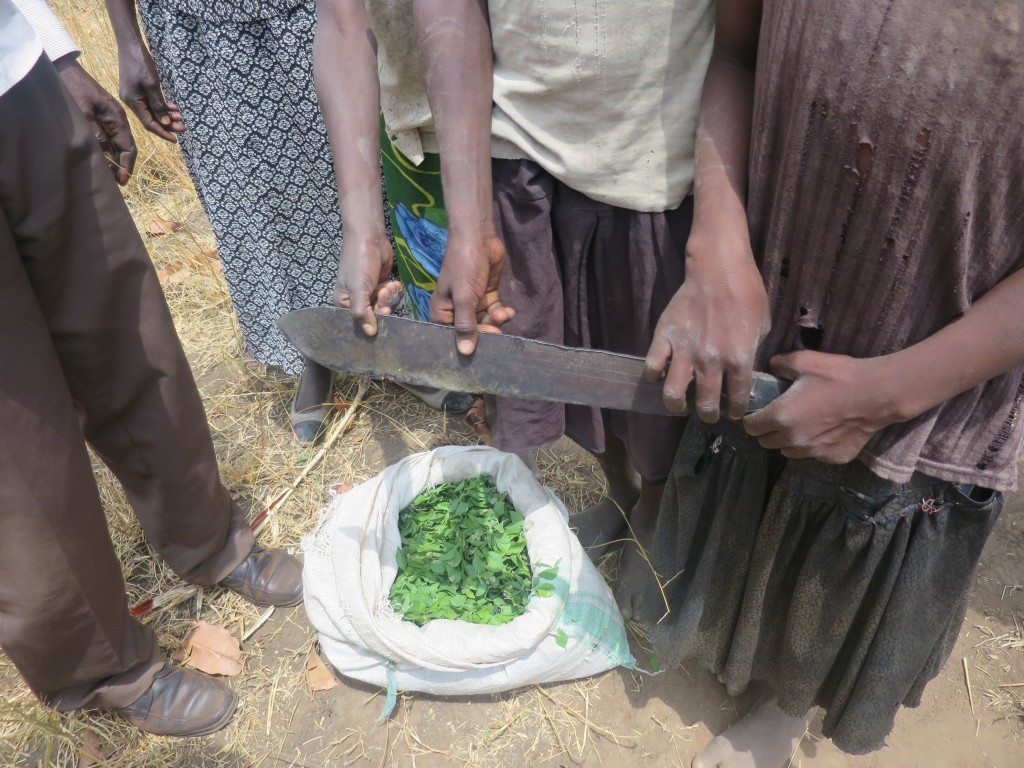
In desperate times, people must be innovative. We saw children sent out to find leaves from Echomai trees. Older leaves are very tough to eat even when boiled for a very long time so those who can climb for new growth do so. Children scale these very thorny trees to find the fresher ends of branches. They cut off the young branches (see the huge machete these children used) and then peel off all the leaves and keep the branches for firewood. The leaves need to be boiled for a considerable period of time to rid them of bitterness. We are told that the taste improves if some peanuts are added, but they no longer have any peanuts left. In the event that not all the leaves are used immediately, they can also be dried and used later.
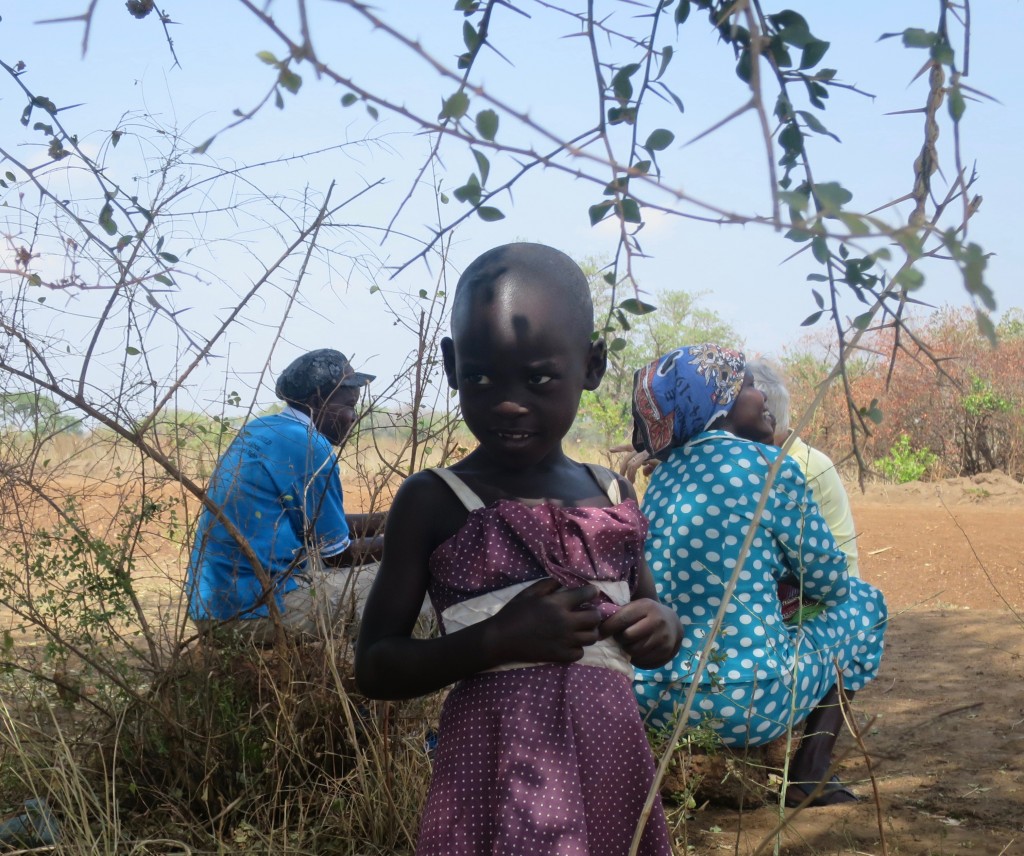
Note the thorns on the branches
Fruit
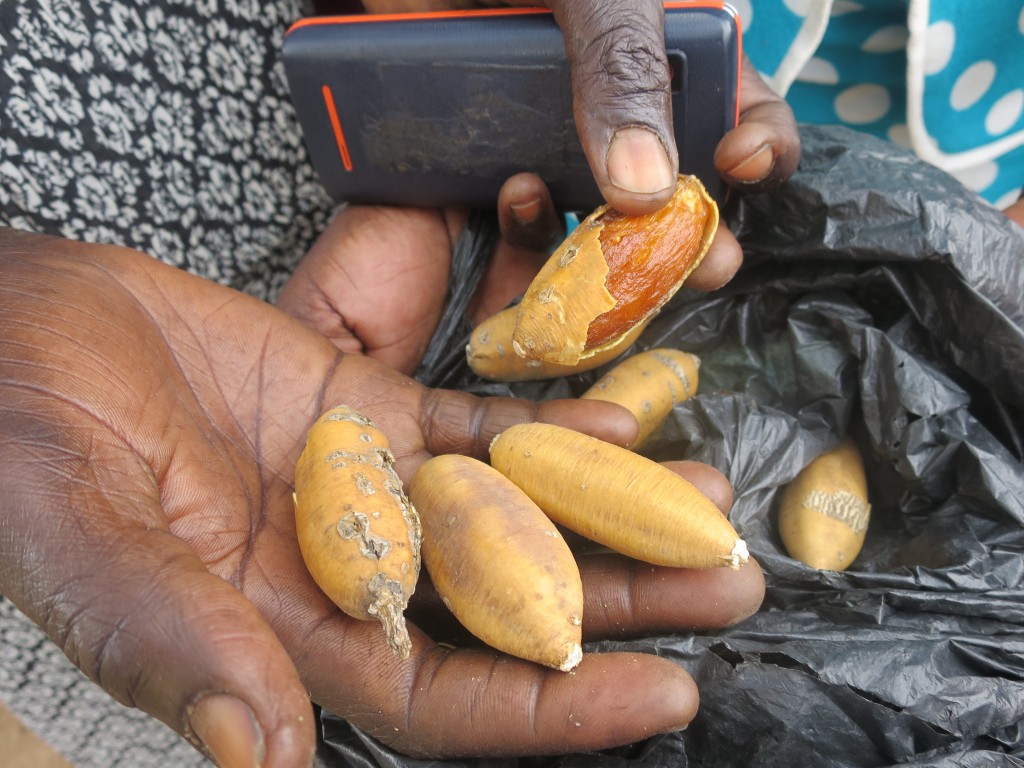
Due to the drought, there are no fruit trees producing fruit at this time. Normally, there would be mangoes, avocadoes and some citrus fruits available. Even bananas are in short supply. We did find a few children chewing on something that looked like fruit. We were unable to find out the name of the tree that produces these. This edible item has a hard shell, a very thin layer of something sweet and fruitish (we tasted it) and a very large pit. We saw some small children enjoying sucking on of these.
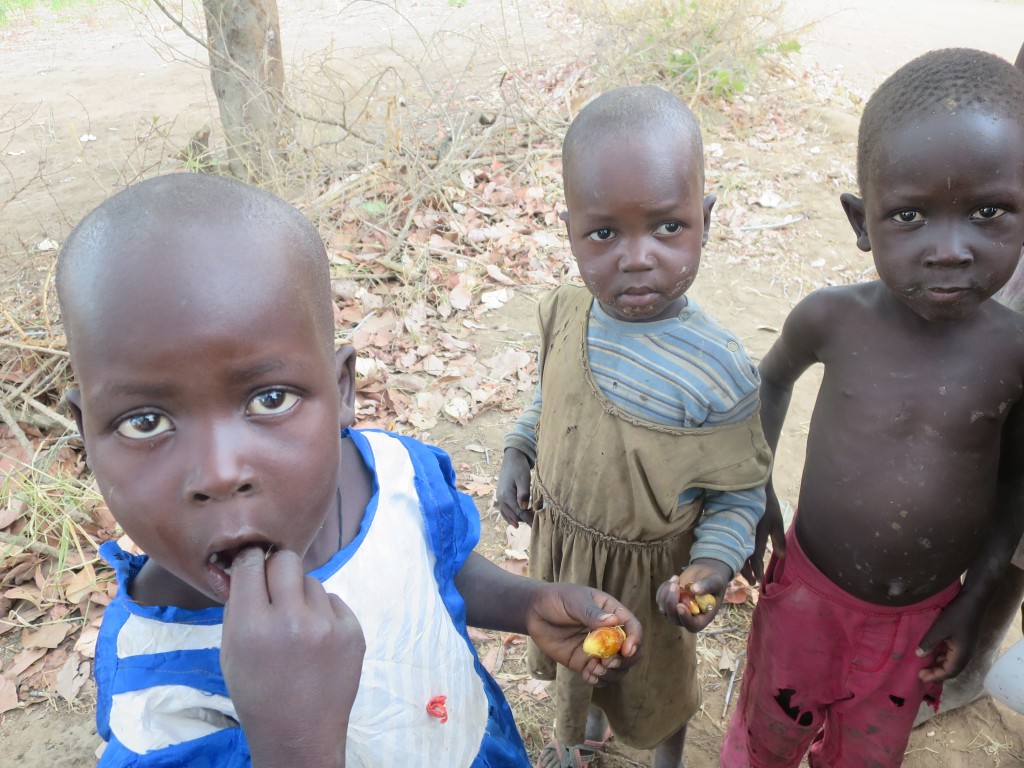
We hope you have found this information on the limited food choices available in this region of Uganda of interest and at the same time have developed a heart-felt appreciation of the challenges these people face every day. Again we ask for your prayers that the proposal we have been working on will soon be approved.
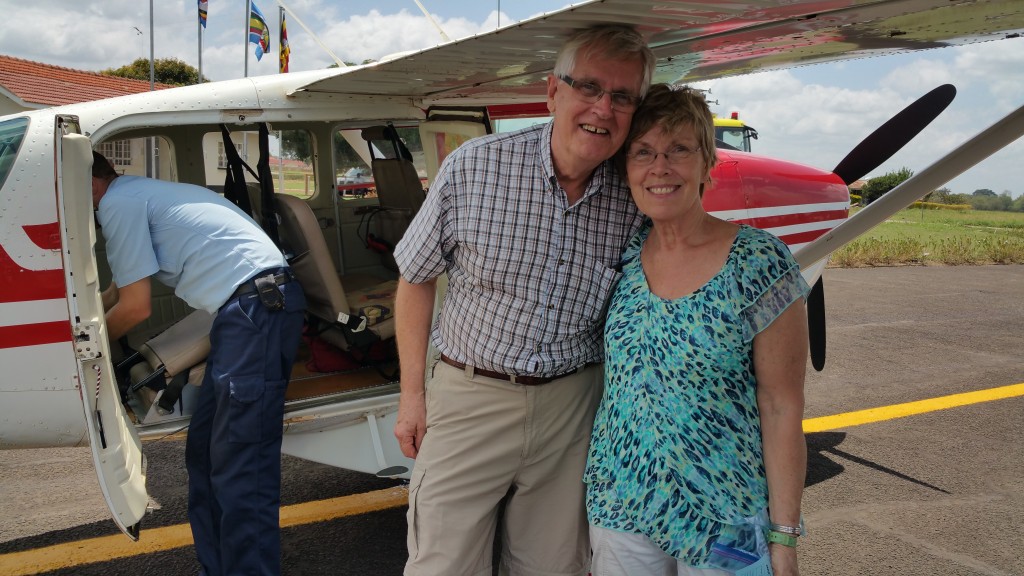
Annie has now returned home to keep commitments there and Harry will return at the end of March after assisting with the initial implementation of the project and turning it over to a very capable local Project Coordinator.


